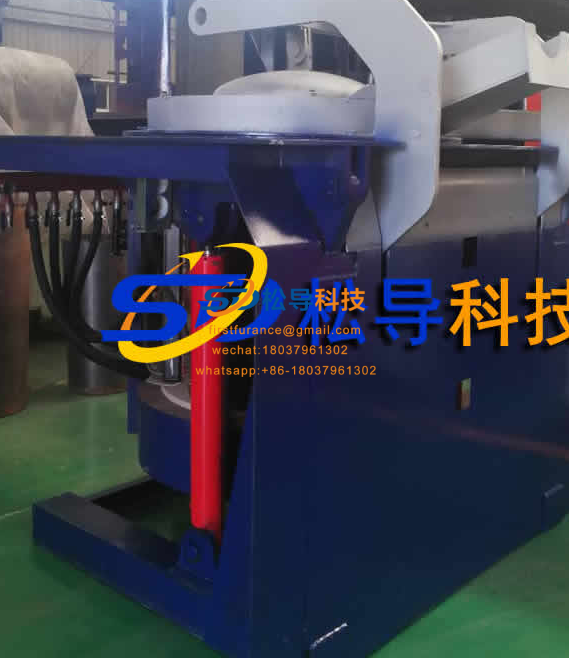(1) Intermediate frequency melting furnace alloy addition sequence
The decisive factor in alloying is the chemical stability of the alloying elements, ie the affinity with oxygen, which is the basic starting point for determining the alloying process. Secondly, the melting point, density, and amount of the alloy, etc., must also be considered. Generally speaking, alloying elements with low affinity for oxygen, high melting point or high addition amount can be added in the early stage of smelting. Generally, the affinity of alloying elements and oxygen is generally added during the reduction period, and the addition of morning and evening also depends on the amount of addition. Oxidizing elements (AL, Ti, B, etc.) are added later in the reduction.
(2) Alloying operation characteristics:
1Ni, Co, Cu, etc. are not oxidized during the steel making process, so they can be added during charging or added during the melting period.
2W, Mo element has less affinity with oxygen, and has a higher density and a higher melting point. Advance addition is beneficial to melting and uniform composition. The degree of addition of tungsten iron during the reduction period is smaller. When the amount of supplement is not less than 0.5%, it should take 20 minutes to make the steel after the addition.
The affinity of 3Mn, Cr and oxygen is greater than that of Fe, which is generally added at the initial stage of reduction and adjusted later. The recovery rate of Mn is above 95%. The burning loss of Cr mainly forms Cr2O3 into the slag, which often makes the reducing slag green and becomes sticky. This is especially obvious when smelting high-chromium steel. When the amount of chromium added is 1% later It should take 10 to 15 minutes before tapping.
4V has a strong affinity with oxygen, and should be added in the case of good deoxidation of molten steel and slag.
10. Operation process of reduction period
(1) Key points of white residue refining:
1After the slag removal, the slag is quickly added to slag to cover the molten steel to prevent inhalation and temperature drop. This is called thin slag.
2 After the formation of the thin slag or after the addition of the thin slag, the pre-deoxidation is carried out according to the requirements of the steel type, generally inserting AL1 ~ 1.5kg / t. It is also possible to add a calcium-calcium block of 0.5 kg/t.
3 After the thin slag is evenly mixed, some slag can be added as needed. For steel grades with high requirements on the purity of molten steel, carbon powder can be used to refine white slag. However, the decarburization of the whole toner makes the refining time long, and there are always some unburned carbon particles in the slag, which will increase the carbon concentration in the steel tapping process. Therefore, it is generally first to deoxidize with carbon powder, after 15 to 20 minutes, and then deoxidize with silicon powder. Before the addition of the silicon powder, the oxygen in the molten steel and the slag has been lowered to a lower level by the carbon powder. At this time, the silicon powder is added, even if the molten steel is stained by the deoxidation product of silicon, the degree is relatively light.
For general steel grades, it is possible to use a method in which carbon powder and silicon powder are mixed and added to deoxidation. For some special steel grades, strong deoxidizer AL powder, Ca-Si powder, etc. can also be used.
4 Under the white slag, sample and analyze the chemical composition to provide a basis for the alloying operation. Subsequently, the deoxidation is continued with 2 to 4 batches of silicon powder and a small amount of carbon powder. The amount of ferrosilicon powder is about 4 kg/t, and the interval between each batch is 5 to 7 minutes. To ensure the alkalinity, an appropriate amount of lime is added before each batch of ferrosilicon powder is added.
5 If the steel liquid contains S, it can increase the amount of slag. If necessary, it can also remove the slag and then add slag.
6 The reduction period should be taken twice to analyze to ensure the correctness of the analysis. If the two errors are large, the sample should be retested. Supplemental alloys should adhere to the principle of counting two complexes and three cores.
7 During the reduction period, the temperature of the molten pool is higher and the molten steel surface is calmer. Therefore, the molten steel is inhaled at this stage. Therefore, the slag, alloy, deoxidizer, etc. required to be added must be baked and dried.
8 Within 5 minutes before tapping, it is forbidden to add carbon powder to the surface of the slag to avoid carbon increase during tapping. The final deoxidation is carried out 2 to 3 minutes before tapping, and the AL is usually inserted into the furnace. According to 1~1.15kg/t, it can also be used as a silicon-calcium alloy block at 0.5kg/t.
(3) tapping operation
1 steel conditions:
A: qualified chemical composition;
B: The molten steel is deoxidized well, and the molten steel sample shrinks after cooling, and the molten steel with poor deoxidation has a tendency to rise after cooling;
C: the slag is a white slag with good fluidity;
D: The temperature is satisfactory.
2 steel tapping requirements: the first slag after the steel or steel slag is the same.


